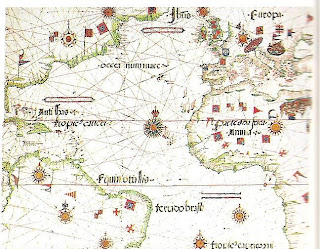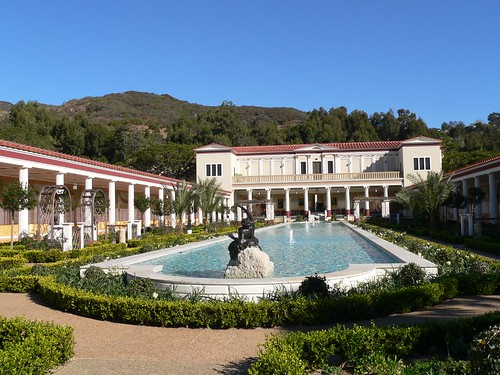.jpg)
You remember Magellan? The intrepid explorer we learned about in 5th grade who sailed around the world and proved the earth wasn’t flat?
My 5th grade teacher took a rather ho-hum approach with that event, but it could have been indelibly stamped on little minds if only she had told us the truth! Such a riveting tale would have created life-long readers and devotees of history.
Ferdinand Magellan, a Portuguese mariner who migrated to Spain when he couldn’t get backing for his proposed route to the Spice Island, was a knowledgeable, tough, steadfast, far-sighted, skilled mariner and navigator. He was also autocratic, arrogant, and unbending, but steadfastly loyal to King Charles of Spain, who didn’t really trust him because of the escalating rivalry between Portugal and Spain.
In 1518, Magellan convinced Charles to back his sailing venture, and in 1519 he set off in his armada of five black ships to either find the route to the Spice Islands (Moluccas) or drop off the edge of the world.
The Trinidad (the only full-sized caraval),
San Antonio, Concepcion, Victoria, and the
Santiago were manned by diverse crews of Italians, Portuguese, Spanish, Flemish, and one Englishman. Each ship had three masts, one of which carried a lateen sail. And each ship had a sub-commander who reported to Magellan on his flagship, The
Trinidad.
Problems arose even before they had sailed away from Seville on the Guadalquivir River and then west into the open sea. The Portuguese sailors resented being bossed by Magellan, who was himself Portuguese but had declared loyalty to Spain. By the time the five ships gained the southern reaches of South America, many sailors had had enough of Magellan’s high-handed tactics and single-minded adherence to his mission, to say nothing of his harsh punishments, and they mutinied.
Only two ships remained loyal. Magellan cleverly divided the remaining three and conquered each by a combination of diplomacy and chicanery. One ship, however,
The San Antonio, turned tail and sailed for Spain. Their excuse, as the captain explained later to King Charles, was that Magellan was cruel and incompetent. Their version of the mutiny and the punishments that followed was falst, but believed.
The resentful but cowed crews on the remaining ships continued the search for the fabled “passage” through the tip of South America, sailing up one promising-appearing river, then back down when the waterway dead-ended. By this time food was running out, the men were frightened and muttering, and Magellan was getting desperate. Finally they stumbled upon a marshy, unearthly muddle of bays and bends and twists which eventually spewed them out into the Pacific Ocean.
Scurvy now attacked the crews with swollen gums and internally disintegrating cartilege so that bodies literally “fell apart.” All except Magellan and his top two officers were afflicted; a coveted jar of quince jam, shared a teaspoonful a day among these three men, protected them from scurvy, though they didn’t know it at the time.
Sick, hungry, exhausted, and rebellious, the sailors of the armada limped into the Philippine Islands where they rested and repaired the leaking ships. Then Magellan single-mindedly drove his ships on to other island chains, which he found full of “ugly pagans” who nevertheless gave them food and shared their women. Up to a point. Magellan by this time was afflicted with a messianic urge to convert the pagans, and he set about baptizing them en masse. In so doing, he made a fatal mistake: he burned one resistant village, and in retaliation the natives attacked.
They hacked Magellan to pieces on the beach. The frightened crews left him to his fate, chose another commander and sailed on to the Spice Islands. The new commander was a good seaman but not a good navigator, and many unfortunate seafaring disasters occurred: one ship was damaged so that a crew had to hand-pump continuously 24/7 to keep it from sinking. The
Trinidad did sink, and still another was burned on purpose so it wouldn’t fall into the hands of the Portuguese, who, because of the squabble over Portuguese and Spanish land rights and sea routes, had sailed off to catch Magellan.
Magellan had a chronicler on board, one Antonio Pigafetti, an amateur anthropologist, who became fascinated with the native customs on the (sometimes cannabalistic) islands visited; he was especially interested in the custom of “panang,” in which the penis is lengthened, pierced with bolts and enlarged with small stones. (The native women said they preferred the European men.) Pigafetti kept meticulous records of the events of the voyage, right down to creating phonetic brochures of the various languages spoken.
Now reduced to two ships, the weary, sick men did manage find the Spice Islands (the Moluccas) and loaded up with tons of cloves and cinnamon while their hosts assured them they “would not tell the Portuguese.” On the arduous way home, back through the tortuous strait the way they had come (now called the Strait of Magellan), one of the two remaining ships ran aground and sank.
But in 1522 the
Victoria, the only ship remaining afloat after three grueling years at sea, struggled back up the Guadalquivir River to Seville; 260 men had sailed away on five ships; only 18 men and one ship had completed the voyage to circumnavigate the earth.
According to Laurence Bergreen’s
Over the Edge of the World, the day after arriving “the eighteen European survivors, attired only in their ragged shirts and breeches, did penance.... Walking barefoot, holding a candle, [commander] Elcano led the gaunt, weary pilgrims through Seville’s narrow, winding streets to the shrine of Santa Maria de la Victoria, where the survivors, shell-shocked, tentative, chastened by all they had seen and experienced... knelt to pray.”
The crew was initially jailed but later exonerated as the fabrications of the
San Antonio’s crew were challenged and disproved; then the survivors headed for their homes, most of them unaware they had made history.




















.jpg)
